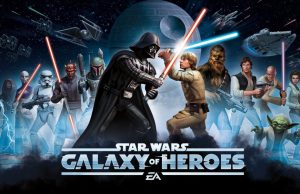Virtual Economy design and balancing has become one of the most important skills of a game designer over the last decade.
This change of importance is because games no longer just need to last 10-20 hours of gameplay, but now need to last years. Economies are the key to making scaleable systems. As a economy designer, it is your responsibility to ensure that the currencies involved in your game are always tight: are always sought by a player.
Inflation is the enemy of an economy designer. Avoiding inflation and managing sources and sinks are a key job for game designers in free to play. There are two main problems that arise from a currency that is too abundant:
- Players progressing too fast through content, or too slowly and leaving the game
- Players gaining too much of a currency to the point that there is no more interesting player choice over how to effectively spend the currency OR the currency is so hard to get that players find the rewards worthwhile and quit the game
We cover the art of scaling an economy and managing inflation in the following articles:
To master the dark art of economy design, the first step is to be familiar with Excel or other Spreadsheeting software. Ensure you know how to:
- Do basic formulas doing operations like adding up, averaging sets of data
- Use functions like VLOOKUP, MATCH, INDEX, INDIRECT to look up configuration data within your functions
- Use functions like SUMIF, SUMIFS to calculate numbers based on assumptions
- Model a simple game economy:
- Given some assumptions, can calculate how many battles it would take an average player to get the necessary XP to level up
- How much time it would take a player in an idle game to purchase the next upgrade
- Model a simple RPG economy or a simple Idle economy, and how it changes over time
- Able to adjust parameters and see how it impacts the player progression curve
- Balance a basic gameplay system
- Given some goals (ex. We want an average player to be able to play 20 times per day) you can balance an economy to work
- Ex. a Energy system in a Match 3 game (how long until the energy refills, what the max cap is)
- Ex. setting the price of a weapon in a RPG game
- Ex. creating a formula for XP in an RPG game
Beyond knowing the hard skills of Excel comes the hard part of understanding when and how to create new currencies, new mechanics, and predicting what will happen to games when you’ve adjusted these parameters.

Source: Both Guns Blazing
There are many types of currencies, and this vastly differs from game to game. Being able to play and break down competitors’ games and their economies is important to understanding how you can improve your own game. Read on for how we’ve broken down some of the best performing economies on mobile today:
For more about creating economies and balancing, read on:








